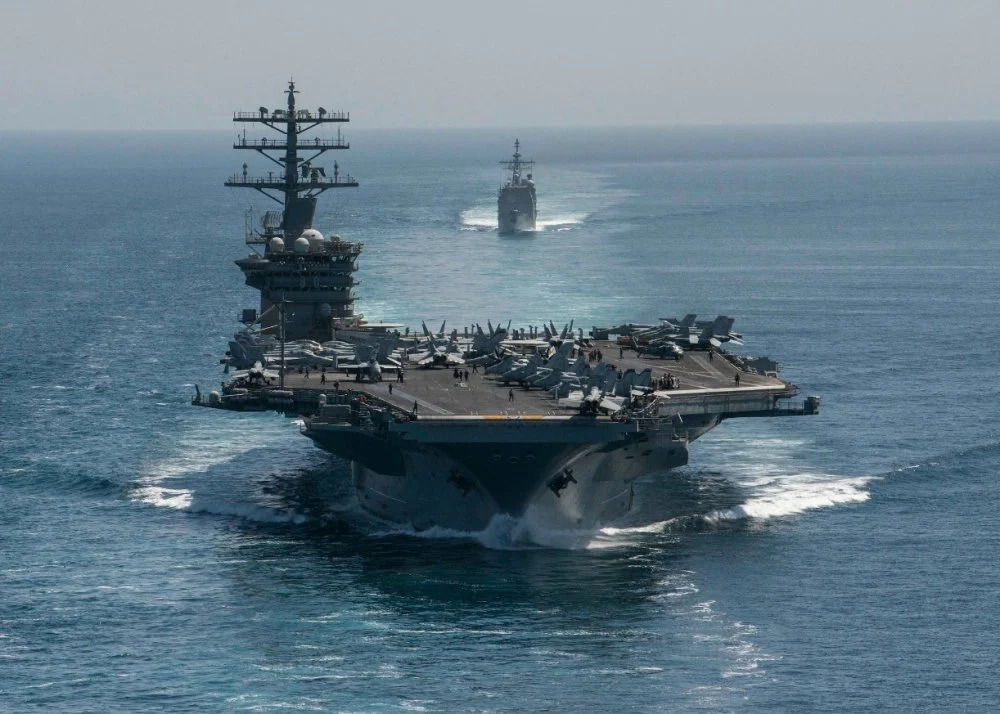
Welcome back to the our channel for a video about how massive aircraft carriers protect themselves from danger when they’re in operation. Cool footage. Those catapults that luanch the jets are actually steam powered for most of the ships shown in the video.
- Carrier Strike Group (CSG): An aircraft carrier operates as part of a larger carrier strike group, which typically includes guided-missile cruisers, destroyers, and other support vessels. This group provides a layered defense against threats from air, surface, and subsurface domains.
- Defensive Systems: U.S. aircraft carriers are equipped with advanced defensive systems, including close-in weapon systems (CIWS) such as the Phalanx and SeaRAM, which are designed to intercept and destroy incoming anti-ship missiles or aircraft. They also have electronic warfare capabilities to detect and counter potential threats.
- Carrier Air Wing: The carrier’s onboard air wing, consisting of fighter jets, surveillance aircraft, and helicopters, serves as a powerful offensive and defensive force. These aircraft can conduct offensive strikes against potential threats while also providing defensive capabilities, such as air defense and surveillance.
- Aegis Combat System: Some U.S. aircraft carriers, particularly those in the Nimitz and Ford classes, are equipped with the Aegis Combat System. This system integrates radar, missiles, and command and control capabilities to defend against aerial threats and provide area air defense.
- Anti-Submarine Warfare (ASW): Aircraft carriers have dedicated ASW assets, including helicopters and anti-submarine warfare aircraft, to detect and counter potential submarine threats. These assets can conduct submarine hunting and employ various detection and attack methods to protect the carrier.
- Intelligence and Surveillance: U.S. aircraft carriers employ advanced intelligence, surveillance, and reconnaissance (ISR) capabilities to gather information on potential threats in their operational area. This information helps in situational awareness and enables proactive defense measures.
- Operational Flexibility: U.S. aircraft carriers have the advantage of being highly mobile, allowing them to adjust their position and maintain distance from potential threats. This provides additional time to react and employ defensive measures.
It’s important to note that the specific techniques used by U.S. aircraft carriers may evolve over time as technology advances and new threats emerge. Additionally, some details of defensive measures may be classified for security reasons.
Only the new Ford class carries are equipped with the electromagnetic catapults. At 4:14 I’m curious about cruising directly in the wake of another large vessel. Surely the entrained bubbles and turbulence of the leading ship’s wake would affect the efficiency of the trailing ship’s propellers, increasing the occurrence of cavitation, prime-mover wear and fuel consumption. Okay I’ve done 8 deployments seen everything from Beirut too 1st desert storm and many other theater’s that’s not known about.

To travel from Norfolk Va to the entrance to the Mediterranean. Most would think we travel in a straight line from point to point. But we travel farther northerly in a arch type travel directions then east to west points to points because farther north you go the faster you travel. Compared east to west or vice versa. Longitude an latitude distances further north distance is shorter then closer to the south. Imagine shooting a arrow across a field the arrow will travel further shooting it in a arch then straight in the same amount of time. The arrow will travel further in longitude further north you go because distance is longer closer then to the equator you go. Same applies to the southern hemisphere and South pole. Ships travel faster around the globe by traveling in a arch to their destination between continents separated by a large sea. Now once in the Mediterranean its all on the same latitude so its point to point travels.
It would take a couple more days to travel point to point from Norfolk va to Mediterranean entrance then traveling in a arch up in the northern latitudes. Okay some might be confused. So grab a ball wrap string around its biggest mass that’s distance…now measure that same string and measure the distance half way up the ball and its about a forth of the distance, so another way is grab that string which is now TIME measure the distance arching it from middle of it to the other side like a C.
Thats time, now from original point if measurement straighten the string out and you’ll notice you traveled much further in same amount of time by going up into the shorter area of the ball. String represents exact same time and distance traveled using shorter northerly distances then point to points on the longest possible distances.





